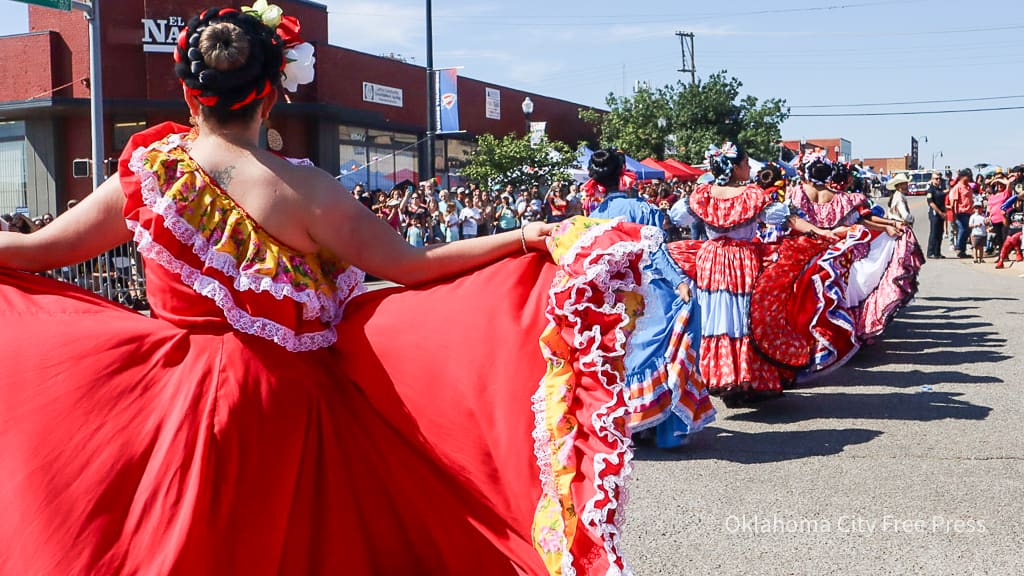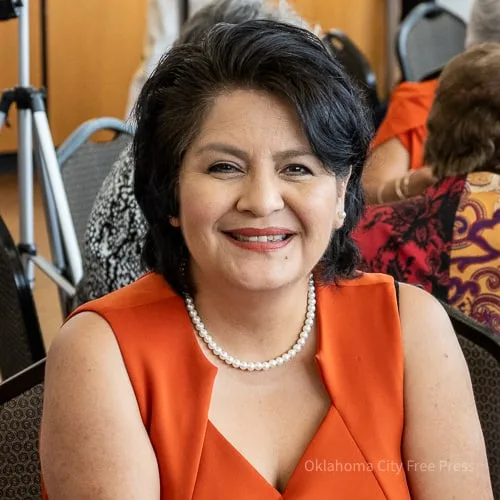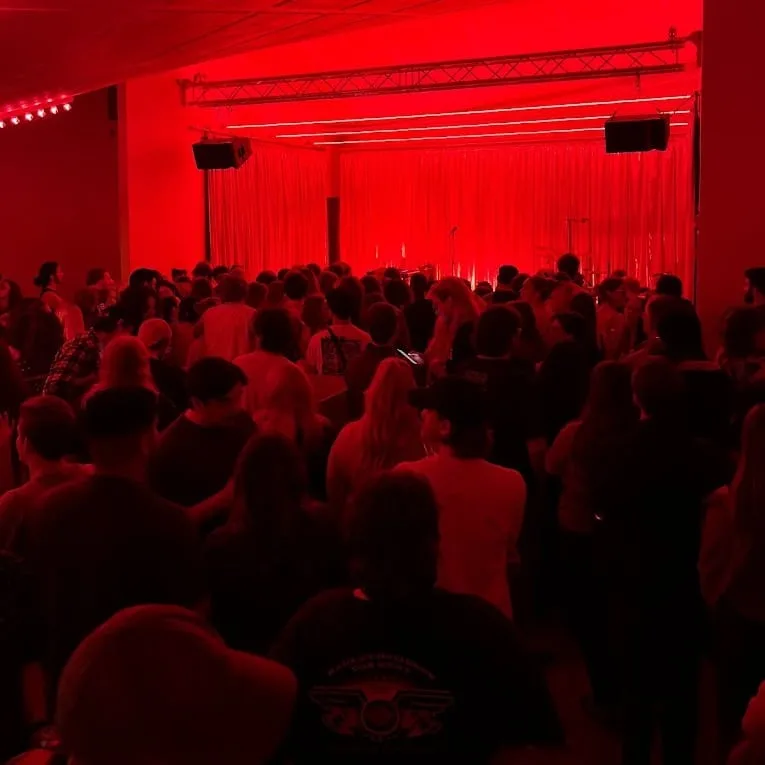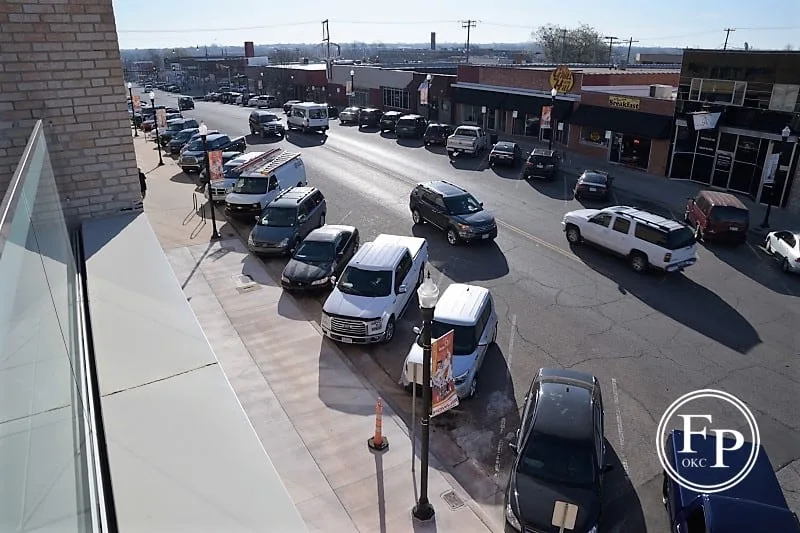Last Updated on November 8, 2023, 9:17 PM | Published: November 8, 2023
OKLAHOMA CITY — OKC’s historic Capitol Hill district has seen slow progress for new business and investment in the eyes of area developers, but district leaders say that’s because their priority remains first and foremost protecting the neighborhood’s existing residents, and the deeply rooted culture that defines the district.
At one time a bustling example of Oklahoma City’s rampant 1950s and 60s development explosion, Capitol Hill has long been overlooked for major business and building development, instead becoming a hub for the city’s widely diverse Hispanic communities.



In recent years, some newer, entertainment-focused businesses have helped turn the area into an occasional destination for city residents from north of the river, but consistent interest and economically seismic development have continued to elude the district in the face of skyrocketing building costs and a perceived demographic exclusivity.
All of this has encouraged district leaders to set their focus on revitalization for the residents and homes already established, and on the long-in-development, $2 million plaza project in collaboration with OKC’s Strong Neighborhood Initiative to bolster the Hispanic community that calls Capitol Hill and the Calle Dos Cinco home.
“It’s an investment that’s been a long time coming,” said Gloria Torres, Executive Director of the Historic Capitol Hill/Calle Dos Cinco District. “Our focus is to create this thriving business district for the community that’s here and to retain this community. We can continue to build instead of just knock it down and start over.”
‘Slow Momentum’
The prospect of continuing to build, however, has become increasingly difficult as COVID-era supply chain strains and ballooning materials costs have made it harder for developers to invest in Capitol Hill.



“Obviously, higher interest rates and construction costs slow momentum, especially in areas trying to revitalize,” said Shannon Entz, Program Planner with OKC’s Strong Neighborhood Initiative. “a 1000 square foot single-family home costs a minimum of $185,000 to build, which is beyond the limits of affordability for many people.”
Torres admits as well that there is an added difficulty in renovating and restoring the district’s many uniquely large buildings, structures that she and other district residents would rather see revitalized than demolished.
“Probably the biggest impediment to us growing here as a retail district, is that these buildings are just so big,” she said. “Our buildings were built back when the store was also the warehouse, so they’re really large spaces, and because of how old they are, it’s expensive to redevelop them into smaller usable spaces for entry-level small businesses.”
‘Slow Traction’
Of the businesses that have recently taken a chance on investing in those large spaces, the entertainment venues – namely the fully renovated Yale Theater and 2023 addition Resonant Head inside the old Oklahoma Opry building – seem to be bringing the most interest from the rest of OKC.
But that interest has proved difficult to sustain.
“It’s been pretty slow traction for us, to be honest,” said Patrick Glueck, talent buyer for Resonant Head, a multi-genre music space originally intended to also serve as a hip, youth-oriented cocktail bar for the district.



But the lack of regular foot traffic or like-minded surrounding businesses has pumped the brakes on the bar side of the plan.
“We’ve actually moved now to event-only,” Glueck said, “because we just weren’t getting the numbers that we thought we would by having a cocktail bar down in South OKC.”
The event side of the business, though, continues to boom, with a slate of increasingly hot names turning Capitol Hill into a more frequent destination for concertgoers from around the Metro, and with a continuing string of community-focused events at Resonant Head serving the district’s Hispanic culture.
“I do think it’s a hard space to sell to the community,” said Glueck. “But at the end of the day, what we want for Resonant Head is for people to not ever feel like we’re taking over this space, but to help it grow.”
Strategic Disagreement
There are some with deep roots in Capitol Hill and Calle Dos Cinco, however, who would prefer to see that growth come from a larger expansion of the district’s demographics, rather than staying beholden to the Hispanic culture that currently calls it home.
“I think that’s a mindset that needs to change,” said Santiago Arzate Jr., a Capitol Hill-based mortgage loan officer and the former Capitol Hill Board President.
“I think that the district needs to focus on being more multicultural,” Arzate told Free Press. “I want to see more of the African-American population and I want to see more of the Asian-American population step up and start building in that area as well. And they just really haven’t.”



Arzate makes it clear that he doesn’t believe that’s due to any clear pushback from the district’s existing Hispanic community, but instead that it’s an oversight on the part of Torres and the current district association.
“The current director, and the current board, they need to be marketing that way, but they’re not,” he said.
Torres disagrees.
“My biggest focus, from my perspective, is revitalizing the area for our current residents,” she said. “It’s not about bringing new residents into the area. We’re highly populated here on Capitol Hill. So what we’re wanting to focus on is revitalization to serve the current community.”
Awaiting the Plaza
That revitalization talk, then, comes back around, like any recent conversation of development in Capitol Hill does, to the long-anticipated plaza project.
“What I hope is that it’s going to bring people back,” Torres says of the project that’s designed to mirror the centralized neighborhood plazas familiar in many Latino and Hispanic communities throughout the world.
Torres sees it as a means to greater respect and standing for the Hispanic community that has come to define Capitol Hill and Calle Dos Cinco for decades.
“The plaza will be a symbol of the beauty of the diverse Latino culture that we have here in Oklahoma City,” she said. “I hope it makes people say ‘I want to celebrate that culture,’ or ‘I want to be able to be recognized as part of that culture,’ or ‘I want that beautiful piece of my culture to be recognized by more than just those that are around me.’”
According to Torres, the perception of Capitol Hill/Calle Dos Cinco as a predominantly Hispanic district should be an encouragement to other cultural development, not a deterrent, as their gain can be a template for minority success across city cultures.
“Our job is to put that information out there. To put the beauty of the culture on display through the plaza. That’s how we’re going to begin to inform the community about our diversity because if we don’t tell our story, somebody else is going to, and who knows what they’re going to say?”




